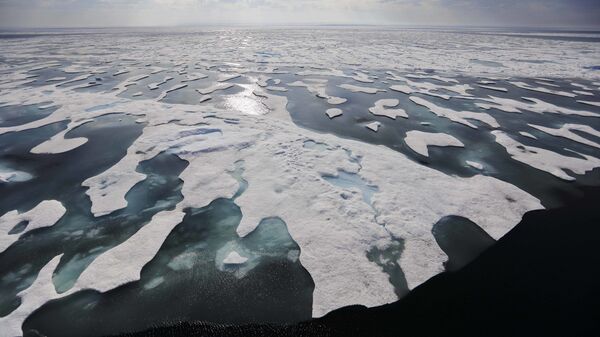Subzero temperatures have caused ozone levels to plummet, leaving a hole that sprawls from the Hudson Bay in north-eastern Canada all the way to Russia's northern Arctic islands, Newsweek reported, citing NASA’s Arctic Ozone Watch imagery that shows how the ozone layer in the area has been depleting since early March.
#Ozonelayer minimum 2020 in Arctic. Special met. conditions has led to stratospheric temperatures below -80°C. Thus, due to sunlight and chemistry, very low ozone values are observed. Normally the stratosphere over the Arctic is too warm and the #polarvortex too unstable. pic.twitter.com/JjGCKqP3BN
— AC SAF (@Atmospheric_SAF) March 30, 2020
While a hole in the ozone layer appears every spring above Antarctica, which is typically much colder than the Arctic, surrounded by mountainous continents rather than oceans, this year temperatures plummeted in the Arctic, causing a thinner O3 layer.
"The low temperature condition (temperatures less than about 195k) in the Arctic are much less common”, John Pyle, an atmospheric scientist at the UK's University of Cambridge, told Newsweek, continuing to explain the details of the observed weather conditions:
“Interestingly, the Antarctic ozone hole last year was quite small; temperatures in the low stratosphere were higher than normal. In contrast, this Arctic winter/spring has seen a very strong lower stratospheric polar vortex and persistent, widespread very low temperatures”, Pyle said, summing up that it is “the meteorological conditions that set the condition [the larger than usual ozone hole]—and this year's Arctic has been exceptional”.
Per Nature, citing Markus Rex, an atmospheric scientist at the Alfred Wegener Institute in Potsdam, Germany, there has been more cold air above the Arctic than any other winter for the past 40 years.
However, there is little to worry about, since, researchers assure, the depletion will likely start to repair over the next few weeks:
"We are entering spring. The atmosphere will warm up and the wind patterns will change. That will put a stop to the depletion and the depletion will repair itself”, Martyn Chipperfield, professor in atmospheric chemistry at the University of Leeds, UK, told Newsweek, acknowledging that whatever changes in the build-up of the ozone layer and the movement of the hole may be “easily tracked”.
Separately, the risks of the ozone layer further depleting are on the decrease, as according to Chipperfield, the bans introduced in the 1987 Montreal Protocol will see levels of ozone-depleting chemicals dip still further.
Back in the 1980s, it was first noticed that the ozone layer above Antarctica was increasingly becoming thinner, with scientists determining the cause - excesses of manmade compounds known as chlorofluorocarbons (CFCs).
According to the Montreal Protocol, the chemicals found to ruin ozone are prohibited by 196 United Nations member states and the European Union. So the hole popping up annually above Antarctica is believed to have a natural cause, namely temperatures colder than usual, and also naturally heal as time passes.



